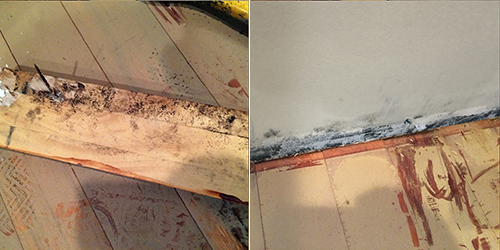Are you in search of advise concerning Preventing Water Damage in the Bathroom?

The bathroom is very susceptible for wet build-up as well as potential water damages as a result of the regular use water in it. This post supplies basic evaluation strategies to aid spotting water damage dangers.
The regular use of water in the washroom makes it incredibly at risk for moist buildup and possible water damage. By inspecting it consistently, you can minimize water related problems.
The following collection of evaluations is very easy to carry out and also ought to be done when in every 3 months in order to keep your washroom in good shape and also to prevent prospective water problems caused by the bath tub, the shower, pipe joints as well as plumbing, sinks, closets, and the commode
Do not disregard performing these assessments and also be extensive while executing them. Keep in mind that these basic assessments can conserve you a lot of cash by offering very early signs for water damages
Bathtub as well as Shower
The shower and also tub call for special focus and also maintenance. Inspect the floor tiles and change if cracked. Make sure that there is no missing cement between the ceramic tiles. Evaluate and change split caulking at joints where the wall surfaces meet the floor or the bath tub. Clogged drains and pipes troubles will avoid the bath tub from drying as well as might show major issues under the bathtub. Speak with a specialist promptly to stop structural damage. Focus on stainings or soft areas around the bathtub walls as they may suggest an interior leakage.
Plumbing
Signs for water damages are tough to discover considering that a lot of pipelines are set up inside the wall surfaces.
Pay unique focus to flooring and walls moisture and spots as they may indicate an invisible plumbing problem. Check moisture degrees in adjacent areas too.
Sinks as well as Cabinets
Sinks as well as cupboards are revealed to dampness and also moisture day-to-day as well as are commonly forgotten. Evaluate regularly under the sink and also on the countertop above it. Repair any drip in the trap as it may suggest drain problems. Check out the sink, slow-moving draining pipelines might show an obstructed drainpipe. Change sink seals if they are cracked or loosened.
The Commode
The commode is an at risk water joint. Inspect the water lines and search for leaks around the commode seat, in the tube, and also under the water container. If you find any kind of indications of wetness on the floor around the toilet, check for leakages in the toilet edge and tank seals.
Be aware that hanging commode dish antiperspirants enhances the possibilities for clogs.
Water Damage Signs In The Bathroom To Avoid Cleanup
Musty smell
This is one of the easiest signs to catch because musty smells are so odorous. The damp, earthy, moldy smell should be a big red flag. The smell will develop when moisture gets trapped in surfaces, and begins to facilitate mold growth. Leaking pipes under cabinets, inside walls, and behind shower fixtures will cause moisture to stay trapped and not dry, which will lead to mold growth and spread. As soon as you notice any musty smells in your bathroom, have it checked for hidden water damage and cleanup signs.
Visible mold
If the smell isn’t there to give it away, sometimes you will actually see mold growth. Finding mold in your bathroom is a serious problem, because mold is very harmful to your health. By the time mold growth is visible, it also means that water damage has already occurred and been present for some time. The only way the mold problem can be resolved is to find the source of the moisture and get it stopped. To safely and adequately remove mold, you need to have professionals handle the remediation. Do not waste any time in getting mold problems addressed, fixed, and sanitized so that you can protect you and your family from the many respiratory symptoms caused by mold exposure.
Damaged floors
Bathroom floors should be able to withstand some exposure to water while still remaining in good condition. However, when excess exposure or water leaks occur, they will begin to damage even the most water-resistant flooring. If you notice any cracking, bubbling, staining, or warping on your bathroom floors, there is probably a water leak somewhere causing the distortion. If you notice areas of the floor have become softer, or even have a spongy feeling, there is probably damage to the subfloor. Subflooring is typically made up of plywood. When plywood is exposed to water or moisture, it will absorb it. Once it has become saturated, the weight of the excess water will cause the wood to swell and soften. Check the floors in your bathroom frequently to catch any of these sings before they lead to damaged subflooring.
Changes on walls
When water leaks behind walls, it will cause changes in the drywall. Peeling plaster, blistering paint, and soggy wallpaper are all good indicators that excess water is building up behind the wall. Water leaking behind drywall will cause it to swell and be soft to the tough. If you start to notice gaps along the trim of your walls, or where tile meets the wall, it could also be a strong indicator that there is a leak behind the wall. Any changes, distortion, or damage on the walls should be evaluated as soon as you notice it to prevent further water damage and cleanup.

I have been very curious about Preventing Water Damage in the Bathroom and I really hope you appreciated our article. Enjoyed our article? Please share it. Help other people discover it. Thanks a lot for your time. Come back soon.
Request Appointment